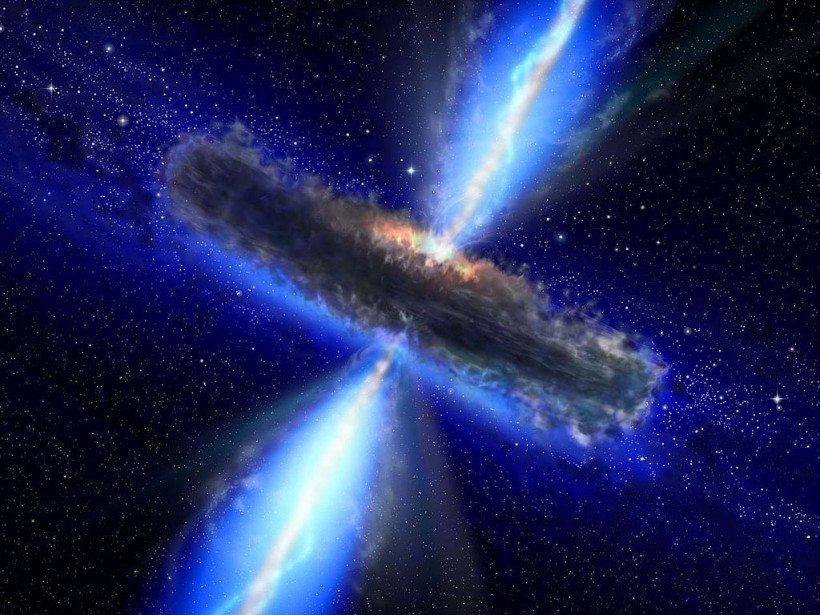NASA's Neil Gehrels Swift Observatory, launched in 2004, has made a remarkable discovery involving a black hole in a distant galaxy exhibiting an unusual behavior. This revelation comes as a result of a groundbreaking technique in analyzing data from the satellite's X-ray Telescope (XRT).

IN SPACE: In this handout from NASA/ESA, an artist's concept illustrates a quasar, or feeding black hole. NASA's Wide-field Infrared Survey Explorer (WISE) revealed millions of potential black holes in its survey of the sky in 2011.
NASA Swift: Massive Black Hole Devours Star
Lead researcher Phil Evans, an astrophysicist at the University of Leicester, UK, commented on Swift's adaptability. Evans said, "Swift's hardware, software, and the skills of its international team have enabled it to adapt to new areas of astrophysics over its lifetime."
The recent discovery, known as Swift J023017.0+283603 (or Swift J0230 for short), involves a sun-like star being devoured by a massive black hole.
This occurrence, termed a tidal disruption event, arises when a star ventures too close to a black hole, resulting in its disintegration into a stream of gas. This gas then interacts with a disk of material surrounding the black hole, creating a burst of multiwavelength light.
Researchers have been exploring variations of this event, known as partial or repeating tidal disruptions. In these instances, the star bulges outward and sheds material with each close pass to the black hole, surviving until it loses too much gas and ultimately breaks apart.
Swift J0230's repeated outbursts were captured by the XRT, with nine additional occurrences observed. This phenomenon is believed to be a repeating tidal disruption involving a Sun-like star orbiting a black hole with over 200,000 times the Sun's mass.
Read Also: NASA Chandra X-Ray Discovers Massive Black Hole That Destroys a Giant Star
Solely in X-Rays
Alice Breeveld, a research fellow at the University College London's Mullard Space Science Laboratory, explained the uniqueness of this event, emphasizing that the galaxy's variability was solely in X-rays.
"We searched and searched for the event brightening in the data collected by Swift's Ultraviolet/Optical Telescope," Breeveld said in a statement. "But there wasn't any sign of it. The galaxy's variability was entirely in X-rays. That helped rule out some other potential causes."
This discovery was made possible by a novel automated search of XRT observations called the Swift X-ray Transient Detector. This system alerts scientists to changes in the X-ray sky, enabling rapid coordination of additional observations.
Originally designed to study gamma-ray bursts, Swift's capabilities have extended to a wide range of celestial objects, showcasing its versatility in the realm of astrophysics.
"Swift J0230 was discovered only about two months after Phil launched his program," said S. Bradley Cenko, the mission's principal investigator at NASA's Goddard Space Flight Center in Maryland. "It bodes well for the detector's ability to identify other transient events and for Swift's future exploring new spaces of science."
Related Article: NASA Features Image of Pulsars, Gravitational Waves Unveiling Supermassive Black Hole Binaries









